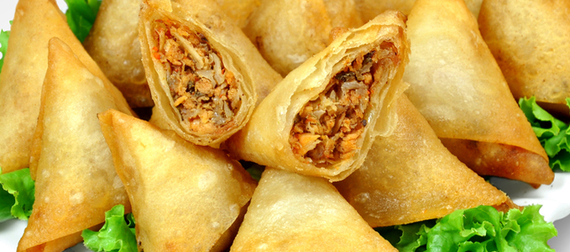If you're from the city of Mumbai, you'll know about the association of the month of Ramazan with Mohammed Ali Road. The street is known to be a place where you can stuff yourself with spicy kebabs, aromatic biryani and sinful phirni. It's not just Mumbai though. Almost every Indian city has a neighbourhood devoted to Muslim cuisine, which most of us think begins and ends at biryani, kebabs and baida rotis. But, in this episode of The Real Food Podcast, Vikram Doctor puts it perfectly - "There's a lot more to Muslim food than this greasy, heavy, spicy food."
Exploring the diversity
Whether it is Bohra, Konkani, Kutchi or Tamil, you will find that there are several unheard of preparations and a much different use of spices and meat within various Indian Muslim cuisines. Konkani Muslim food, for example, historian Mohsina Mukkadam tells us, is based on three ingredients - rice, fish and coconut.
Similarly, Bohra Muslim food is quite unlike the rich, spicy Mughlai food we see on restaurant menus. It is cooked in less oil and the use of garam masala and red chilis is quite limited, says Fareeda Merchant, who contributed to the Inquilab's collection of cookbooks featuring various Muslim cuisines. On the other hand, Husna Rahman, author of Spice Sorcery, tells us that the Kutchi Memon cuisine features such delicious preparations that Kutchi Memons often don't leave the country because they don't want to experiment with any other kind of food!
Yet another facet to the rich and diverse Muslim cuisine is the Tamil Muslim cuisine that has its own version of the biryani. In the podcast, S. Anwar, a photographer, writer and a documentary filmmaker from Tamil Nadu, talks about this delicious preparation that is made from a small-grain variant of rice known as seeraga samba.
Islam & food
In order to understand the diversity and complexity of Indian Muslim food, it's important to factor in how trade routes opened up by Islam led to the spread of certain foods. Coffee, for example, comes from the Yemini and Ethiopian regions. Another familiar food that can be traced back to the Arabian Peninsula is sambusak, which is where the samosa originates from.
Image may be NSFW.
Clik here to view.

Real home cooking, Vikram Doctor says, includes much more than kebabs and biryani. And there have been a few attempts at exposing the world to real Indian Muslim cuisine with food pop-ups and cookbooks. Notable mentions from the latter include Hajra's Recipes of Life for Life by Husna's grandmother, Hajra Mohammed and Mumbai-based Urdu newspaper, Inquilab's compilation of recipes from four Muslim communities.
Listen to all our podcasts here.
Image may be NSFW.
Clik here to view.
 Like Us On Facebook |
Like Us On Facebook | Image may be NSFW.
Clik here to view.
 Follow Us On Twitter |
Follow Us On Twitter | Image may be NSFW.
Clik here to view.
